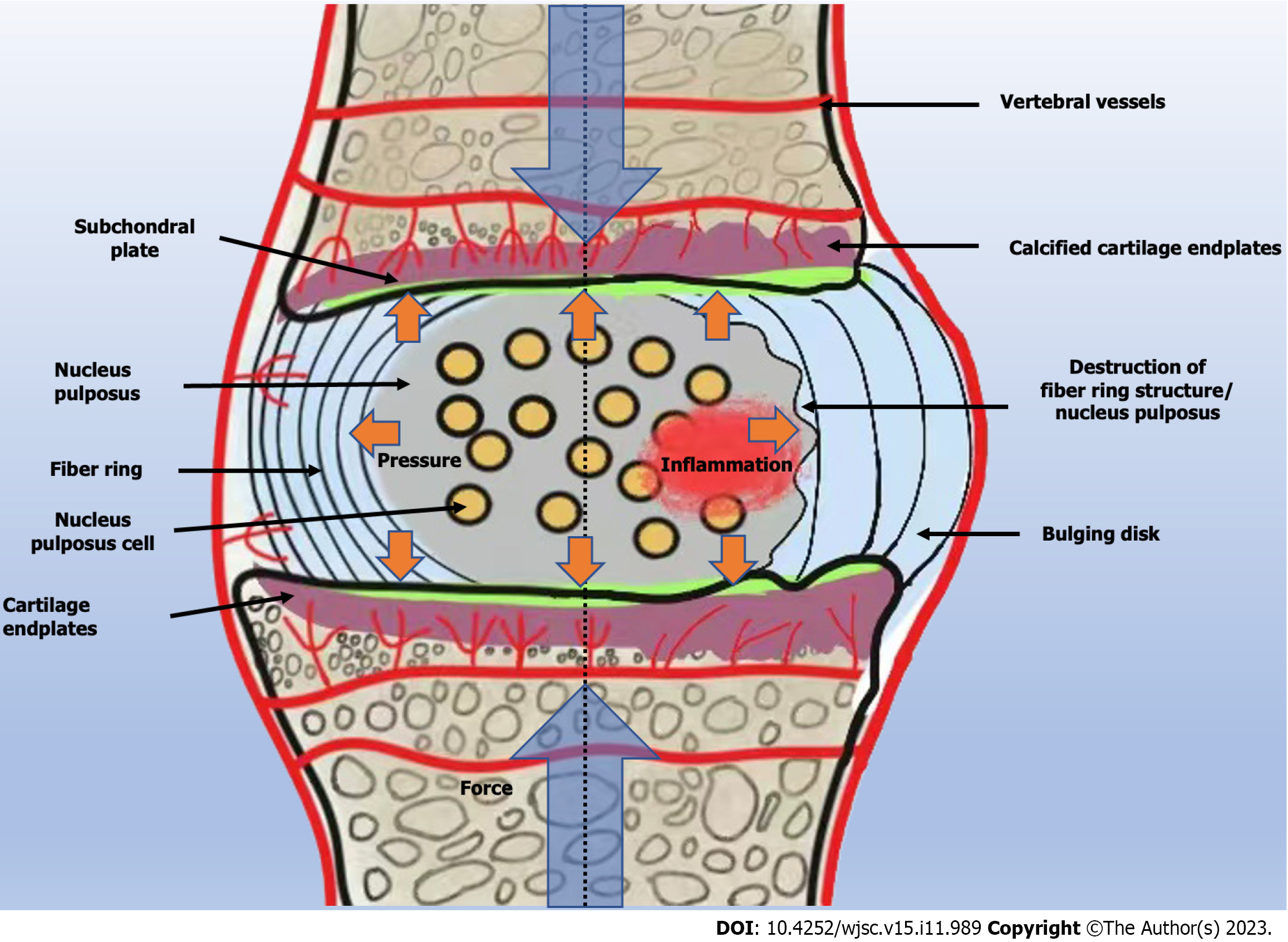Copyright
©The Author(s) 2023.
World J Stem Cells. Nov 26, 2023; 15(11): 989-998
Published online Nov 26, 2023. doi: 10.4252/wjsc.v15.i11.989
Published online Nov 26, 2023. doi: 10.4252/wjsc.v15.i11.989
Figure 1 Mesenchymal stromal cell exosomes can treat disc degeneration through the appropriate target.
The extracellular vesicles secreted by mesenchymal stromal cells can be enriched with a variety of RNAs, DNAs, and proteins that can be targeted to treat disc degeneration. They have been shown to have a corresponding effect in promoting stem cell differentiation into myeloid cells, increasing extracellular matrix production, and reducing the release of inflammatory factors (pain reduction). MATN3: Martrilin-3; SOX9: SRY-box transcription factor 9; TGF: Transforming growth factor.
Figure 2 The harsh environment in which the intervertebral discs are located.
There is almost no vascular distribution in the intervertebral discs, and the nutrient supply relies mainly on the diffusion of oxygen and nutrients in the subendothelial vessels. The closer to the center of the nucleus pulposus, the lower the partial pressure of oxygen and the concentration of proteoglycans, which results in an extreme microenvironment, such as nutrient deficiency, high osmotic pressure, and acidic PH.
- Citation: Zhang QX, Cui M. How to enhance the ability of mesenchymal stem cells to alleviate intervertebral disc degeneration. World J Stem Cells 2023; 15(11): 989-998
- URL: https://www.wjgnet.com/1948-0210/full/v15/i11/989.htm
- DOI: https://dx.doi.org/10.4252/wjsc.v15.i11.989














